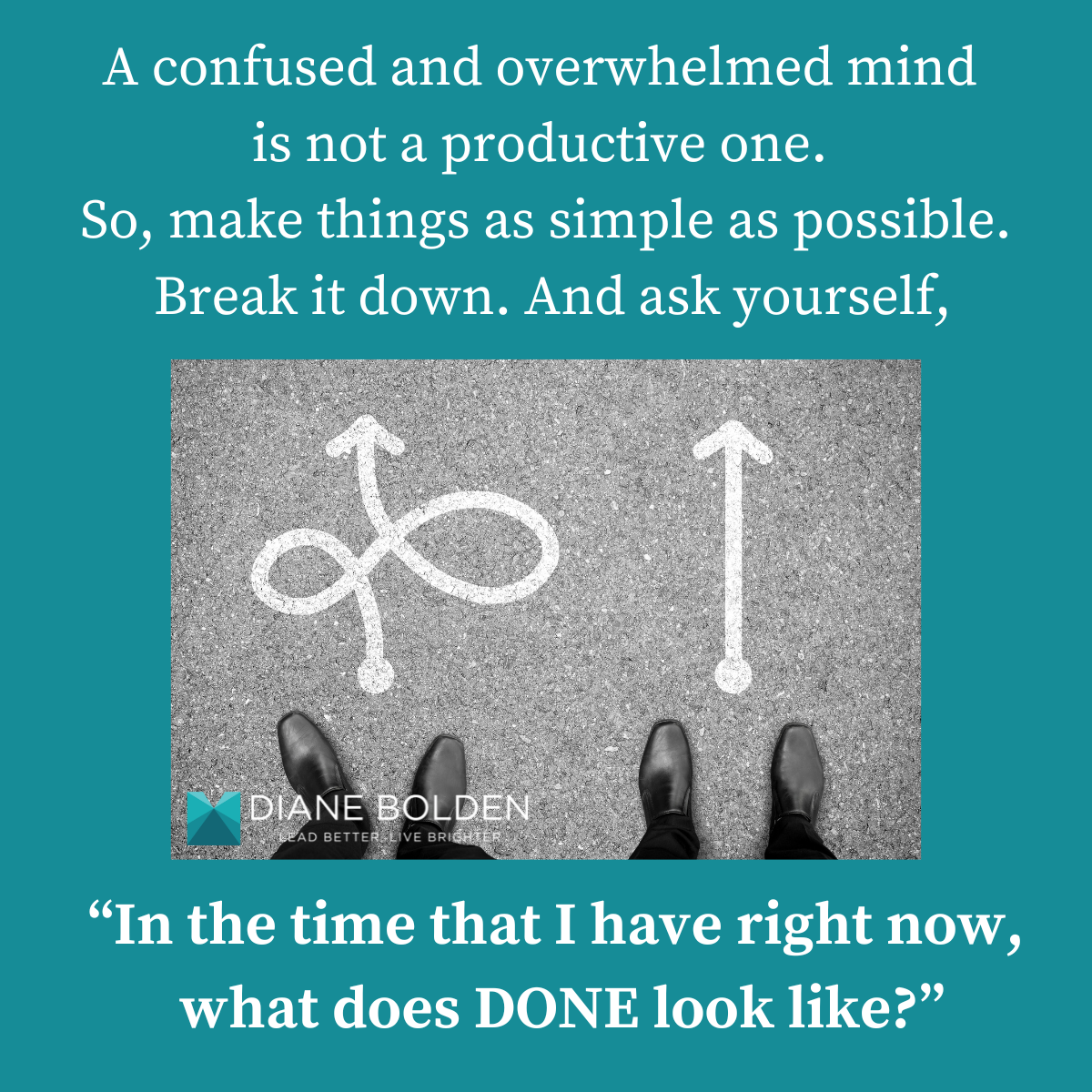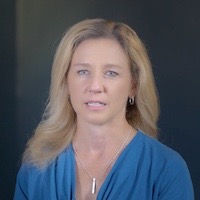Category Archives: Uncategorized
Do You Dare to Dream?
As children, most of us received mixed messages. You may have been encouraged to follow your heart and give life to your dreams in addition to being conditioned to be practical, hedge your bets, and take the safest route.
Over time, many of us have allowed the roar of public opinion – that often tells us our dreams are frivolous, selfish, and unlikely to come to fruition – to silence that small still voice within.
But those among us who have risen against their odds have learned to reverse that process and believe in themselves and their dreams despite the overwhelming evidence around them that would suggest that success is improbable.
“If you lose hope, somehow you lose the vitality that keeps life moving, you lost that courage to be, that quality that helps you go on in spite of it all.
And so today I still have a dream.”
~ Martin Luther King
Listen closely to the silent whispers of your heart that beckon you to think bigger and act bolder – and to bust out of old paradigms that feel stale or stagnant.
Do what you can to gain clarity on what they are telling you.
And then take action.
If you’d like some help turning your vision into reality, check out the replay of my recent Navigating Transitions: From Crossroads to Clarity workshop.
Here’s to your success!
Diane
P.S. Not sure what the workshop covered? This link will also take you to an overview of the main points explored in this 52-minute replay video.
Harness the Power of Your Heart’s Desire
Consider the essence of what you most want to achieve, create, or become. Perhaps it is not yet concrete, but rather an inkling of something that is calling to you.
Every great accomplishment begins with a dream and a vision. It requires imagination and an openness to receive its gifts. As Albert Einstein once told us, “Imagination is everything. It is the preview of life’s coming attractions.”
And imagination is big and amorphous – it’s not easily captured, quantified, or broken down. It is something that must be welcomed and nurtured. The reward of having done so is that it will reveal itself to you in ways that make you feel alive with possibility.
We are often encouraged to set goals before we even have a vision of what we want to accomplish. But doing so deprives us of the dream that provides the fuel necessary to achieve those goals.
There is wisdom in your desire – even if you cannot yet quantify it, break it down in tangible ways, or even articulate it. In fact, sheer inklings and aspirations can become powerful seeds for the most innovative and ground-breaking accomplishments.
What is your vision? And how can you breathe life into it?
If you’d like more on how to gain the clarity necessary to envision and chart a path to your desired future, download my special report, “Why Real Leaders Don’t Set Goals (and what they do instead)”.
Life is meant for more than checking boxes…
Can you remember the last time you were so excited about something that you could feel the hair on your arms or the back of your neck stand up? Or the giddiness of a five-year-old at the prospect of visiting an amusement park?
Maybe it got you out of bed in the morning or put a little spring in your step.
When the promise of a future state brings a smile to your face or makes your heart beat a little faster, lean in. Give yourself to the dream – and the dream will give itself to you, taking on a life of its own in ways that will surprise and delight you.
Author, philosopher, and civil rights activist Howard Thurman once said, “Don’t ask what the world needs. Ask what makes you come alive and go do it. Because what the world needs is people who have come alive.”
I couldn’t agree more.
What is calling to you right now? And how can you make the space necessary for it to reveal itself to you in all its grandeur?
Why SMART Goals are Often Dumb
Early in my career I (like many driven professionals) was prone to setting SMART goals. You know, “Specific, Measurable, Attainable, Relevant, and Timebound”. It’s the conventional teaching we have all heard before.
But after time I came to realize that this approach leaves much to be desired – that in fact, it can actually keep us from getting where we most want to go.
Goals are something we’re encouraged to stick to. But sometimes the goals we set for ourselves no longer match the direction we find ourselves wanting to go.
When a goal no longer serves you and you stop wanting to pursue it, you may feel as though you’ve failed. However, the real failure might well be what happens when you stick to a goal that is no longer a fit with what you want, who you are, and the person you are becoming.
Getting where you want to go requires that you have an intense desire to get there. The pleasure and satisfaction of your destination — and your journey — need to be greater than the pain and discomfort you will endure to get there.
What might start as a very compelling goal may lose its appeal when your priorities change, and your very preferences and passions begin to change and evolve as well. Sometimes goals that were relevant and appropriate at one point in time will no longer serve you at another.
People grow and evolve at a pace that may not be aligned with the time frames identified in a SMART goal. When you lock yourself into achieving a particular goal, it can become a blinder that keeps you from recognizing and acting on a course of action that is far more aligned with who you really are and want to be.
If you are someone who regularly sets goals, take a moment to determine whether your current goals are working for you. Do they reflect what you really want? …how you are evolving as a person? Do they inspire you — or constrain you?
And whether you have set goals or not, consider the essence of what you most want to achieve, create, or become. Perhaps it is not yet concrete, but rather an inkling of something that is calling to you.
There is wisdom in your desire, even if you cannot yet quantify it, break it down in tangible ways, or even articulate it. In fact, sheer inklings and aspirations can become powerful seeds for the most innovative and ground-breaking accomplishments.
If you’d like more on how to gain the clarity necessary to envision and chart a path to your desired future, download my special report, “Why Real Leaders Don’t Set Goals (and what they do instead)”.
From DOING to DONE: The Power of Simplicity & Focus
You’ve carved out the time, eliminated the distractions, and sat yourself down to finally do that important work you’ve been meaning to get to. But you just can’t get yourself to start.
Suddenly, all manner of things become more appealing… checking your inbox, thinking about what you’ll eat for lunch (or dinner), reorganizing the piles on your desk.
Before you know it, your time is up, and you feel like you haven’t really accomplished much.
If that sounds familiar, you aren’t alone. I’ve been there too. And I work with executives all the time who have similar experiences.
One of the most common assumptions people have that keeps them from executing is that they won’t be able to do justice to the work in the time they have. And when projects are large, sometimes they don’t even know where to start.
A confused mind is not a productive one. So, see if you can make things as simple as possible.
Break it down.
And ask yourself, “In the time that I have right now, what does DONE look like?”
Maybe you don’t have to have the whole problem solved or project completed. Perhaps you just need to do some research to find the answers to a few questions, make a couple of calls, or break out the steps you need to take moving forward.
If you can make the expectations you have of yourself realistic, you may find yourself more inclined to jump in (and less prone to distraction or derailment).
This is consistent with Victor Vroom’s expectancy theory of motivation, which has been a solid operating principle since the 1960’s. There are three components:
1) The level of perceived satisfaction you’ll have when you achieve a goal.
Check in with your why. What is it about making progress on this thing you’ve set time aside for that is rewarding? How can you make it meaningful to you?
2) Your belief that the effort you put in will allow you to perform.
If your definition of DONE is about moving the needle incrementally forward versus having everything finished (or perfect), you can proceed with greater confidence.
3) The degree to which your performance will allow you reach your desired outcome. If you know the actions you take in the time you have will bring you closer to your ultimate goal, your desire to take that step will increase. (This is why many digital surveys feature progress bars that show how close you are to finishing.)
Never underestimate the power of simplicity. Sometimes you can do more when you focus on less.
Here’s to moving forward!
Diane
Sometimes the Smallest Changes Spark the Biggest Transformations
“How do you like your new office?” my friend asked. I had moved from a small building to a larger one and managed to find a nice little space on the second floor at the top of a winding staircase.
It didn’t take long for me to realize it was likely the ONLY small office, surrounded by much larger suites filled with employees of organizations far bigger than my own.
“I love it. It’s beautiful and quiet… Maybe too quiet sometimes,” I added.
My friend looked puzzled.
I missed walking down the halls of my old building, seeing warm smiles on familiar faces, and engaging in an occasional bit of banter.
“It’s strange,” I told her. People don’t seem to make eye contact. Everyone stares straight ahead and silently goes about their business. It’s like an unwritten code or something.”
“An introvert’s dream.” She replied.
She was right. Kind of.
As an introvert myself, I must admit I’m not one who actively seeks conversation. But something was missing. I just wasn’t feeling very connected.
A few days later I was washing my hands in the lady’s room. A woman came out of the stall and proceeded to the sink next to mine. Something welled up in me. Before I knew what I was doing, I heard myself break the silence, suddenly blurting out a clumsy greeting.
“How are you today?”
She looked up, somewhat startled, and stared blankly at me. For a moment, I was reminded of how it felt to be an awkward teenager.
“I’m fine,” she replied after what seemed an eternity. “How are you?”
“I’m great. I’m kind of new here, and I noticed that people don’t really talk to each other much – it’s like an elevator where everyone faces forward and never interacts. And I started to do that too. But I thought it might be nice to try something different today.”
Her face softened, and her eyes brightened. “Yeah, you’re right. I’m just running all the time from thing to thing and so preoccupied.”
“I know that feeling,” I responded, thinking of how many times I was kind of relieved to not have to engage with anyone.
“It really is nice to just be able to talk like yourself, isn’t’ it?” she said.
I found her choice of words interesting. We both relaxed a bit and became a little more conscious. After exchanging names and talking ever so briefly, we each went our way.
And in that moment, the trajectory of my day (and perhaps that of days to come) was changed.
As I reflected on the interaction later, I realized how easy it is for all of us to just take as given the circumstances we find ourselves in – the social norms, the cultural conditioning, the perceived constraints of our day-to-day lives.
Some of those norms serve us. But every once in a while, you might recognize one you’d like to bump up against and challenge in some small, perhaps even unperceivable way.
Do it. You may find you’re not the only one who wants to break through those unwritten rules.
Sometimes the smallest changes spark the biggest transformations – even if only in yourself.
Here’s to busting out of your box!
How to Connect, Communicate & Collaborate with Greater Influence & Impact
Are there people in your office (or your life) that drive you nuts because they insist on doing things so differently than you do?
We’re led to believe we should treat others the way we want to be treated. But if one person’s preferences are another’s irritations, using that approach to connect, communicate and collaborate doesn’t always work very well…
When people don’t say and do things the way you’d like them to, you might believe they are intentionally trying to make you crazy – when in reality they are just operating with a style that is different than yours.
This week’s video will give you a leg up on understanding people’s differing styles in a way that’ll transform frustration into appreciation, collaboration and synergy.
And if you’d like to find out what is likely YOUR most dominant behavioral style, take this complimentary 14-question quiz. Along with your results, I’ll provide you with tips to help you not only understand but also LEVERAGE your unique style to maximize your effectiveness, influence and impact – with others who are both similar to and different from you.
Here’s to your success!
Diane
P.S. If you know of others who might like to learn about their style – and how to best connect, communicate and collaborate with others too, you can direct them to www.LearnYourStyle.com to take the complimentary quiz as well.
Today’s the day! Join me at noon PST…
It’s Friday… the day we all wait for. A threshold between our work and personal lives.
What if you could spend an hour learning how to better integrate those two worlds in a way that enhances both?
Join me TODAY from noon to 1 pm PST for a free one-hour webinar that will shed some light on how to unleash your very best performance at work while also enjoying more satisfaction and fulfillment – both on and off the job. (Details below).
Here’s what one senior executive had to say about learning to better integrate work and life:
 What I liked about The Pinocchio Principle Unleashed is that while it is professionally career-oriented, structured, and measured, it incorporates lots of the human aspect too. That makes it fun. It makes you really reflect, provoke deep thoughts, and be more prepared to deal with your day-to-day stuff both at work and outside of work. It is holistic. It’s a well-rounded approach to how one could grow and develop as a human being as well as professionally as a leader.
What I liked about The Pinocchio Principle Unleashed is that while it is professionally career-oriented, structured, and measured, it incorporates lots of the human aspect too. That makes it fun. It makes you really reflect, provoke deep thoughts, and be more prepared to deal with your day-to-day stuff both at work and outside of work. It is holistic. It’s a well-rounded approach to how one could grow and develop as a human being as well as professionally as a leader.
Diane’s style is very personal and highly engaged. She puts a lot of thought into her examples and has a knack for using just the right one at the right time. The content is excellent, and the tools are so useful. It has helped me to become more aware of what triggers me and how to self-direct so that I can stay in a state of flow and not fall into old reactive patterns that keep me from being effective. This has benefited me immensely, both personally and professionally.
Dr. Islam Salama, CEO, Hyperion Technologies
TODAY’S THE DAY! Come join me from noon to 1 pm PST, when I’ll be sharing some of the same concepts I teach in The Pinocchio Principle Unleashed program.
![]()
![]() Here’s the link: https://us02web.zoom.us/j/84361908256?pwd=S0pmRDY2L0NTc29rMDUyVTQ1U2RwUT09
Here’s the link: https://us02web.zoom.us/j/84361908256?pwd=S0pmRDY2L0NTc29rMDUyVTQ1U2RwUT09
To ensure that you’ll get a calendar notice and increase the chances that we can reach you in case of any additional technical difficulties, be sure to register in advance.
You’ll learn:
- Why many high-achieving executives tend to unwittingly hinder their own and others’ performance (and how to keep that from happening)
- Puppet vs. Genius: Which are you leading from (and at what cost)?
- How to progress smoothly through a five-phase approach that unlocks the very best performance in yourself and others – while minimizing stress, pressure, and overwhelm
I’ll also give you a sneak preview of The Pinocchio Principle Unleashed, a 13-week leadership development program designed to help you overcome stress, pressure and overwhelm so you can maximize your effectiveness, make a bigger impact, and enjoy your work and your life more.
Can’t attend? No problem. Simply respond to this email and I’ll make sure you get a link to the recording.
Here’s to unleashing your Genius!
Diane
P.S. Interested in registering for The Pinocchio Principle Unleashed program? We’ve moved the deadline to Friday 8/25. Get more details and enroll here.
Sometimes you just need a new perspective…
We’ve all experienced that feeling of banging our heads against the wall trying to figure something out or move beyond an imposing obstacle. It’s frustrating when solutions elude you – or when what used to work just doesn’t anymore.
What would it be worth to be able to lead and solve problems in a whole new, more effective way?
Join me tomorrow (Friday 8/18) from noon to 1pm PST for a free one-hour webinar and learn how a few simple shifts can open you up to a whole new level of effectiveness and clarity. (Details below).
Here’s what one person had to say about learning and integrating these concepts…
 “I have more tools in my toolbox of well-being and how to view any particular problem, whether faced with it on a personal level or on a professional level. I feel like I’m on a new plane of consciousness and I have a more optimistic and wider view of my own capabilities and life. I’ve been able to connect to my own intuition more readily and more often by practicing what we’ve done in this course and spending time talking with Diane. I think it’s very powerful. My leadership has opened up.”
“I have more tools in my toolbox of well-being and how to view any particular problem, whether faced with it on a personal level or on a professional level. I feel like I’m on a new plane of consciousness and I have a more optimistic and wider view of my own capabilities and life. I’ve been able to connect to my own intuition more readily and more often by practicing what we’ve done in this course and spending time talking with Diane. I think it’s very powerful. My leadership has opened up.”
Scott Munger, Chief Operations Officer, Omicron Technologies
Below you’ll find all the info you need to join me on tomorrow’s webinar. I hope to see you there!
Here’s the link: https://us02web.zoom.us/j/84361908256?pwd=S0pmRDY2L0NTc29rMDUyVTQ1U2RwUT09
To ensure that you’ll get a calendar notice and increase the chances that we can reach you in case of any additional technical difficulties, be sure to register in advance.
You’ll learn:
- Why many high-achieving executives tend to unwittingly hinder their own and others’ performance (and how to keep that from happening)
- Puppet vs. Genius: Which are you leading from (and at what cost)?
- How to progress smoothly through a five-phase approach that unlocks the very best performance in yourself and others – while minimizing stress, pressure, and overwhelm
I’ll also give you a sneak preview of The Pinocchio Principle Unleashed, a 13-week leadership development program designed to help you overcome stress, pressure and overwhelm so you can maximize your effectiveness, make a bigger impact, and enjoy your work and your life more.
Can’t attend? No problem. Simply respond to this email and I’ll make sure you get a link to the recording.
Here’s to unleashing your Genius!
P.S. Interested in registering for The Pinocchio Principle Unleashed program? We’ve moved the deadline to Friday 8/25. Get more details and enroll here.
How to Contain the Spread of… FEAR (even amidst a pandemic)
To say we are living in a time of great challenge and uncertainty would be a major understatement.
There’s no dispute that we’re currently facing a virus over which we have very little control.
But there is another contagion being propagated that we have every ability to contain.
And that is FEAR.
Fear does funny things to people. At its worst, it produces panic — a physical state that literally disables the brain’s ability to think clearly. There is seemingly no other explanation for the current shortage of toilet paper. It just isn’t rational. But the greater the shortage, the higher the demand.
When people are in fear, they bypass their ability to think and are easily influenced by mass hysteria and knee jerk reactions. They also tend to put their own needs above those of others.
Fear triggers our instinct for self-preservation, leading us to scan our environment for anything that indicates that danger is present.
But when we’re gripped by fear, we just don’t see things clearly. And the more fear there is, the more evidence there seems to be to suggest there is something to fear, which of course elicits more fear.
Fear narrows the aperture of the lens we view things through. In other words, we are only seeing a small fraction of the entire picture. It’s like staring at a dot on the wall by smashing your face against it. The dot is all you’ll see, even though the room you are in is exponentially larger than the small dot right in front of you.
- You’ll put your attention on what is wrong, rather than what is right.
- You’ll spend more time and energy on describing, complaining about, and magnifying the problem than on finding the solution.
- You’ll be more concerned with what you can get rather than what you have to give.
- You’ll focus more on what is out of your control than on things you are able to influence.
- You’ll tend to feel helpless rather than hopeful – and you’ll act in ways that lead others to feel that way too.
But each of us has the power to turn this fear response around. And it is imperative that we do it now.
Though most of us have never lived through a pandemic as extensive as COVID-19, we have all likely weathered a few storms over the course of our lives.
And we’ve not only lived to tell about it, but also learned a thing or two along the way. In times like these it is essential to draw upon that wiser, calmer part of ourselves that knows this too will pass – and that we can rise to these challenges with courage and grace.
I call this vital part of ourselves Genius. Here are three simple ways to activate it:
1. Do whatever you can to quiet your mind and calm yourself down.
When fear hijacks your system, your thinking will be cloudy, and your body will be on high alert. The cortisol that gets released will increase your heart rate and blood pressure. Your neural activity will be diverted from the most highly developed part of your brain to the most primal.
As a result, you’ll experience a fight, flight or freeze response. You’ll be prone to seeing dangerous things that aren’t there – and inclined to screen out helpful things that are.
To counter that reaction, take some deep breaths. Get oxygen flowing back into your cells. Then, ask yourself a question that moves your neural activity back into your prefrontal cortex, the part that allows you to think deeply and make good decisions.
A question like, “What do I really want?” or “What could I do to make this situation better?” will help you get back on the right track.
The more you can quiet your mind, the more space you’ll create for inspiration and answers to come in – and the more likely you will be to recognize and act on them when they do. Rather than unconsciously reacting, you can respond with thoughtful intention.
2. Choose curiosity over judgment.
Once you’ve come to a fixed conclusion about something, you are not likely to consider other perspectives. Cognitive science tells us that confirmation bias leads us to take in information that aligns with our current beliefs and screen anything that contradicts them out.
And from that mindset, you’ll run the risk of behaving in ways that make things worse.
But while judgment narrows your aperture and keeps you in a fixed position, curiosity opens it and allows you to get unstuck. Your lens zooms OUT rather than IN.
Instead of only seeing that small black dot, you’ll take in more of your surroundings. In place of the wall that once blocked your progress, you’ll see possibilities and solutions that can move you forward.
Notice anything you may currently be believing that could be shutting you down or causing more stress – and challenge it. Ask yourself, “Is it really true?”. Rather than paying attention to what your eyes are showing you, get curious and ask, “What am I NOT seeing?”
3. Shift your focus from what you stand to lose to what you have to gain.
In the face of this international calamity, we have all had to make sacrifices. Life as we know it has drastically changed.
Offices, schools, stores, restaurants and other establishments are closed (or have limited access). Travel has been halted. The market is taking a hit. Your daily routine has likely been obliterated. The safety of people you love (and you, yourself) is in question. And as a result, social distancing has become an imperative.
But amidst all this, there are things to be optimistic about.
-
- For many of us, the crazy hustle bustle that compelled us to run from one thing to another is giving way to opportunities to slow down, rest and find our bearings.
- Our true priorities are coming into focus, allowing us to find more meaning and purpose in the things that we do and the way that we do them.
- Though we cannot always be in each other’s physical presence, we can stay connected. We can (and must) lean on our advancing technology to communicate with, support and care for one another without being in the same room.
- We are facing a collective challenge that has the power to bring us together despite our differences. As we worry less about ourselves and find ways to help each other, we activate reserves of strength and resilience we may not have realized we had.
- When nothing is certain, anything is possible. We can view the current disruptions we must deal with as opportunities to find better ways of doing things we never had reason to evaluate. We can be more intentional and conscious in everything we do.
In summary,
1. Do whatever you can to quiet your mind and calm yourself down.
2. Choose curiosity over judgment.
3. Shift your focus from what you stand to lose to what you have to gain.
As you take these steps to become more connected with your own Genius, you’ll hold a space for others to do the same. Your ability to remain calm and optimistic will rub off. And you’ll not only quell the virus of fear but also proactively extend the hope and optimism that will allow us to prevail both individually and collectively.
Now THAT’s something worth spreading.
For more on connecting with your Genius, check out The Pinocchio Principle: Becoming a Real Leader – How to Unleash Genius in Yourself and Others.
Did you enjoy this article? Share with someone who could benefit from reading it: https://dianebolden.com/2020/03/19/how-to-contain-the-spread-of-fear-even-amidst-a-pandemic/
*Image: Pixabay 2020








